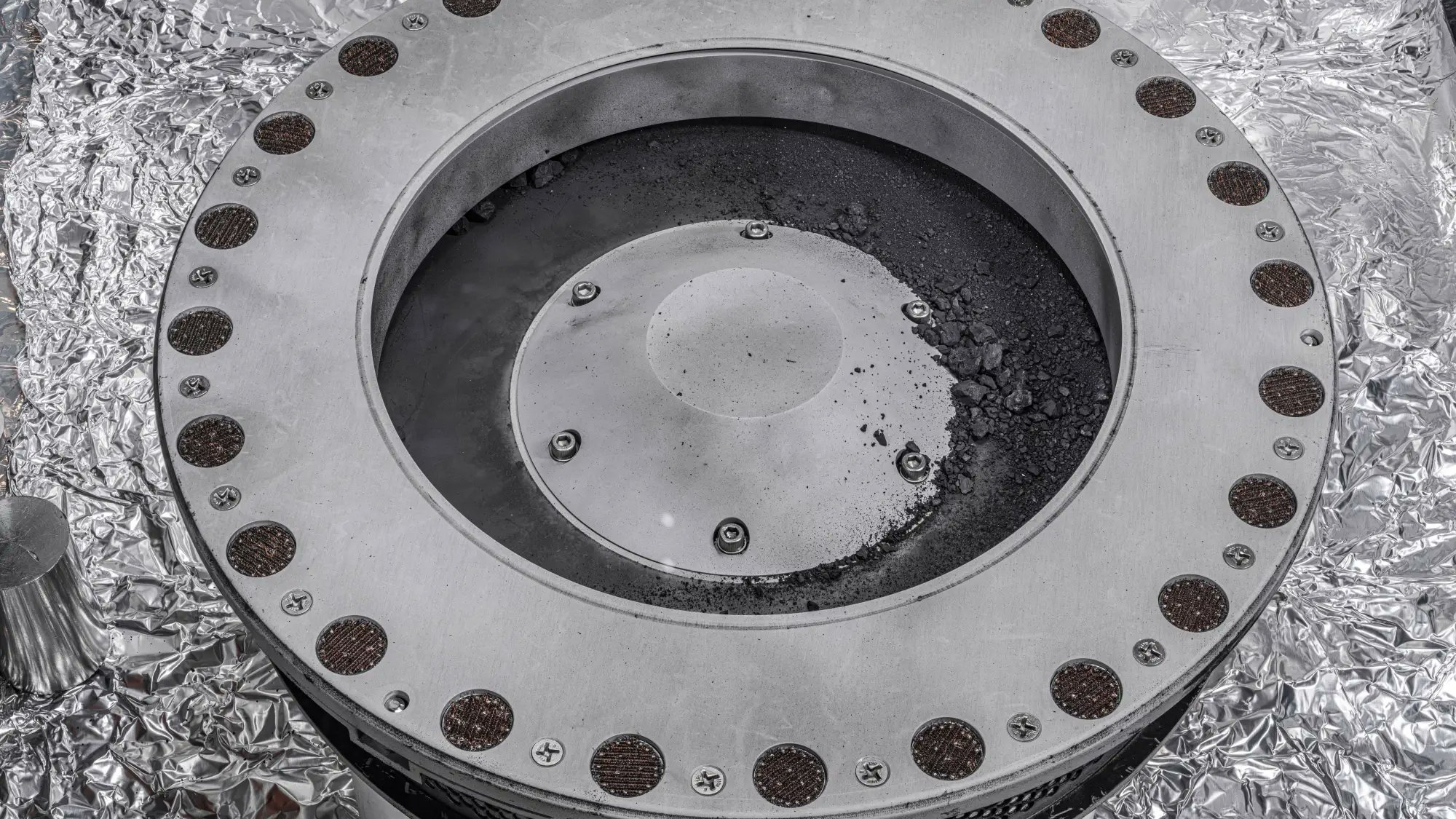'What is that material?': Potentially hazardous asteroid Bennu stumps scientists with its odd makeup
'I fully expect the cosmochemistry community is going to go to town on this.'

Tasked with finding clues about origins of life on Earth, NASA's OSIRIS-REx spacecraft scooped up pieces of a rugged, rubble-pile asteroid named Bennu in late 2020 and delivered them to Earth about two months ago. On Monday (Dec. 11), scientists got their first detailed description of some of that extraterrestrial collection.
"We definitely have hydrated, organic-rich remnants from the early solar system, which is exactly what we were hoping when we first conceived this mission almost 20 years ago," Dante Lauretta, the mission's principal investigator, said at the American Geophysical Union (AGU) conference being held this week in California and online. "I fully expect the cosmochemistry community is going to go to town on this."
Lauretta, a professor of planetary science and cosmochemistry at the University of Arizona, said the bits of the ancient asteroid that have been retrieved so far are from the outer lid of the sample capsule and are rich in carbon and organic molecules. All the particles are very dark in color and consist of centimeter- and millimeter-sized "hummocky boulders" that have a rough "cauliflower-like texture," said Lauretta. "They cling to everything we touch them with."
Related: OSIRIS-REx: A complete guide to the asteroid-sampling mission
The OSIRIS-Rex spacecraft was designed to be in contact with Bennu for six seconds, but it ended up plunging 1.6 feet (0.5 meters) into the asteroid's surface for 17 seconds instead. A victim of its own success, the probe dug out so much material that particles began leaking out of the sample collector's head — but they were still protected inside its outer lid. On Monday, Lauretta blamed a 1.3-inch (3.5 cm) Bennu stone that appeared to have jammed open a small flap on the head and let the material escape into the lid.
Two faulty fasteners continue to prevent technicians from removing the lid to access and catalog the bulk of the collected sample that's still trapped within the head. While they wait for new tools to be approved for use on the precious rocks, they are using tweezers to pick tiny rocks through the partially open flap, totaling the collected material to 70.3 grams (0.07 kg) — higher than the mission's mandated minimum of 60 grams (0.06 kg).
Some of that material was shipped for spectral analysis at the NASA-supported Reflectance Experiment Laboratory (RELAB) facility in Rhode Island, while another batch was sent to the Natural History Museum in London. Initial findings using spectroscopy, a scientific technique that reveals a material's makeup by studying how it reflects different wavelengths of light, show a dominant spectral signature in blue. This azure hue is currently unexplained but may mean the space rocks contain even more water than scientists initially predicted, Lauretta said, adding that more results will be shared at a scientific meeting next spring.
Breaking space news, the latest updates on rocket launches, skywatching events and more!
The material also hosts high amounts of magnesium, sodium and phosphorus, a combination that so far puzzles the team.
"I've been looking at meteorites for a long time, and I've never come across anything like that," said Lauretta. "It's a head-scratcher right now. What is this material?"

Sharmila Kuthunur is an independent space journalist based in Bengaluru, India. Her work has also appeared in Scientific American, Science, Astronomy and Live Science, among other publications. She holds a master's degree in journalism from Northeastern University in Boston.

